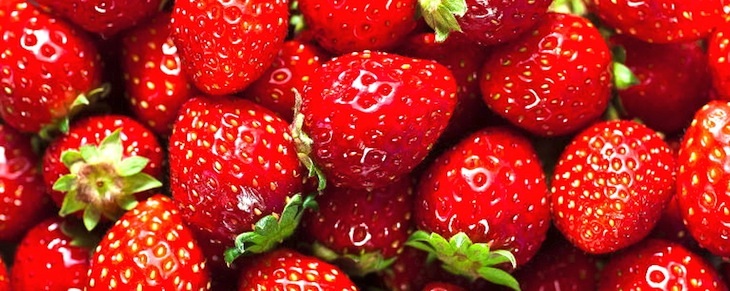Strawberries already ripening in Jackson County
by January 11, 2024 8:11 am 604 views

Strawberries were not widely grown in Arkansas until the late 19th and early 20th centuries. The fruit crop became more pervasive as railroad lines expanded around the state and it became easier to ship.
It’s estimated that more than 200 acres of strawberries are grown in the state each year, according to the Encyclopedia of Arkansas. This year the berries might be headed for an early start.
Strawberries, which are typically ready close to Mother’s Day, have been found growing and ripening before Christmas in Jackson County.
In Arkansas, strawberries are typically planted in September to early October. Depending on planting date row covers are applied to help with growth prior to dormancy. Row covers help to trap heat from the soil and are made of white, lightweight, non-woven fabrics.
“Christmas strawberries?” asked Matthew Davis, Jackson County extension staff chair for the University of Arkansas System Division of Agriculture, in a Facebook post on Dec. 21. “Warm weather has prompted a few strawberries to form under the row covers.”
“Every year, you’re going to have some strawberries show when you see warm weather like we’ve had this fall and early winter. The row covers have something of a greenhouse effect,” he said. “They’re usually eaten by insects or damaged by cold though.”
The first reported strawberries in Arkansas were raised by Daniel W. Wheaton on White County. People in that county and surrounding counties soon began growing the berries as well making Northeast Arkansas ground zero in the state for growing the crop.
The precocious berries are part of research Davis is doing on new strawberry varieties and gauging how they react to winter weather.
Once acclimated to cold temperatures, strawberry plants are cold hardy to around 10 degrees Fahrenheit and leaves are hardy to around 22 degrees. Shorter days and colder temperatures signal the plant to prepare for dormancy.
“It’s inevitable. You always have row covers blow off,” Davis said. “We typically use row covers to help with fall growth due to delayed planting. Due to labor restrictions, row covers are often applied and may not be removed until early March. The issue is that row covers are keeping the plants potentially from reaching dormancy.”
In his trial, Davis is leaving half of the plants in his strawberry rows uncovered. He will be making weekly visits, noting damage and growth in the “crown or branch crowns,” which are the growing parts above the soil line in the center of the plant.
“We are really wanting to see if the use of row covers may be delaying plant dormancy,” he said. “Strawberries need a transitional time that allows the plant to go dormant. During that dormant time, we get concerned when we see temperatures at or below 15 degrees Fahrenheit. When temperatures reach that low during dormancy we would look to cover or recover any plants that might be exposed.
“The cold may affect each variety differently,” Davis said. “Plants will form two to five branch crowns leading up to spring. We would like to see one to two branch crowns forming in the fall along with the main crown. Cold weather can damage the crowns and cause delays in maturity or plant death. These plots will give us the opportunity to see any variety differences in crown formation, damage, and dormancy.”
Among the varieties in Davis’ trials are Camino Real, Fronteras, Ruby June, Chandler, and a few numbered varieties.
In northeast Arkansas, the covers generally come off the strawberries at varying times and when labor is available, Davis said, adding he hopes to see if the covers are having a positive or negative impact on yield for his growers.
For areas not closely observed, it’s
There were about 56,300 strawberry acres harvested nationwide in 2022, according to the U.S. Department of Agriculture. It’s a $3.2 billion industry annually.
